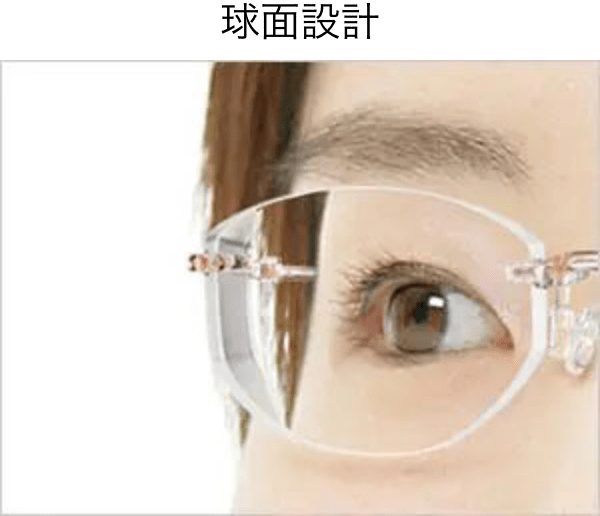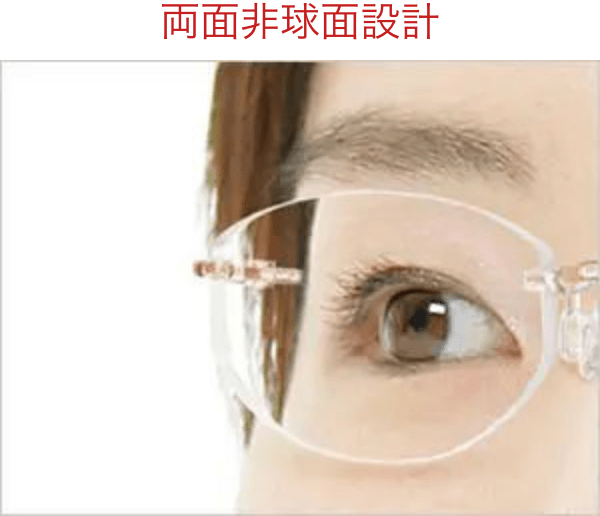遠視用/近視用/乱視用/老眼用の基本となるレンズです。
単焦点レンズにはいくつか種類があります。度数やご年齢、メガネの経験値によってオススメするレンズは変わります。お客様に最適なレンズをご提案いたします。では、レンズを選ぶ上でどのような点に気をつければよいのでしょうか。
単焦点を選ぶ選定基準は3つあります。
1.屈折率
2.レンズ設計
3.アッベ数
その中で「屈折率」と「レンズ設計」をお客様には選んでいただきます。アッベ数は屈折率と紐付いる選定基準となりますので、これを基準に選ぶことはありません。
1.屈折率について
屈折率とはレンズの薄さの指標となります。当店では1.50, 1.53, 1.60, 1,67, 1.74の素材を採用しております。この屈折率が大きくなればなるほどレンズが薄くなりますが、透明度が少し下がりますので、強度近視や強度遠視などで本当に必要な方以外は超薄型と言われる高屈折レンズを使用することはオススメいたしません。
度数に応じて適切なレンズをご提案いたします。
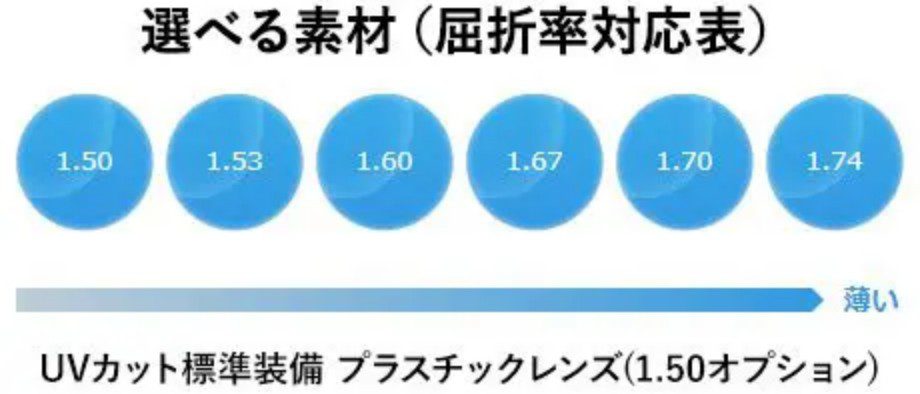
2.レンズ設計について
レンズ設計とは言わばレンズの作り方の違いです。「しっかり見える範囲」が広く「歪み」が感じにくいレンズには、見え方を良くするためにたくさん補正が掛かっています。但しレンズ装用感には個人差がありますので、度数に応じてご提案いたします。
(1)オーダーメイドレンズ
前傾角・そり角・角膜頂点間距離を計測した上でお客様ひとりひとりのフレーム形状に合わせて作る世界に一つしかないオーダーメイドレンズです。
(2)両面非球面設計
非球面設計をレンズの表側と裏側の両方に施すことにより、有効視野を広くとったプレミアムレンズです。フレームカーブが浅いフレームに採用しております。
(3)内面非球面設計
非球面設計をレンズの裏側に施すことにより、有効視野を広くとったプレミアムレンズです。フレームカーブが深いフレームに採用しております。
(4)外面非球面設計
非球面設計をレンズの表側に施すことにより、周辺の歪みを抑えております。日本で発売されている単焦点レンズの多くは外面非球面レンズです。
度数に応じて適切なレンズをご提案いたします。
[ 見え方イメージ ]

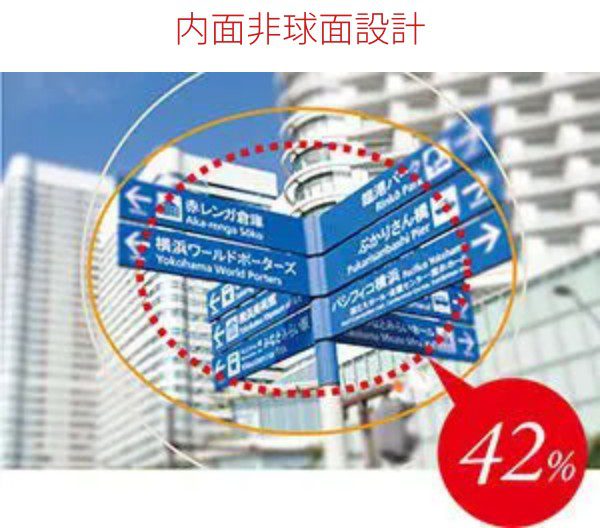
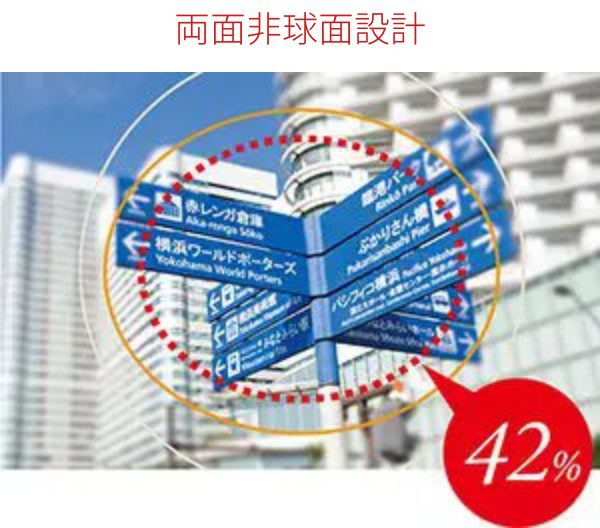
シャープに見える境界領域(画像はイメージです)
[ フェイスライン印象もスマートになります ]
